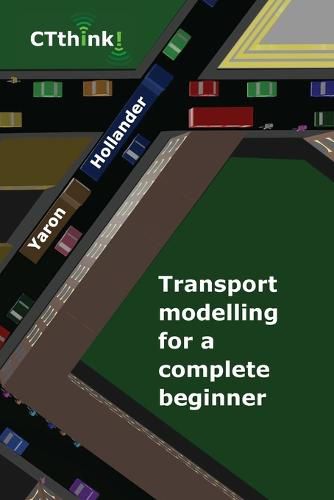Readings Newsletter
Become a Readings Member to make your shopping experience even easier.
Sign in or sign up for free!
You’re not far away from qualifying for FREE standard shipping within Australia
You’ve qualified for FREE standard shipping within Australia
The cart is loading…






This title is printed to order. This book may have been self-published. If so, we cannot guarantee the quality of the content. In the main most books will have gone through the editing process however some may not. We therefore suggest that you be aware of this before ordering this book. If in doubt check either the author or publisher’s details as we are unable to accept any returns unless they are faulty. Please contact us if you have any questions.
Finally! A book about transport modelling which doesn’t require any previous knowledge. Transport modelling for a complete beginner explains the basics of transport modelling in a simple language, with lots of silly drawings, and without using any mathematics. Click here to watch a 3-minute introductory video (or search for the book name on YouTube if the link doesn’t show).
This book is aimed at transport planners, town planners, students in transport-related courses, policy advisors, economists, project managers, property developers, investors, politicians, journalists, and anyone else who wants to understand the process of making decisions on transport infrastructure. It is suitable for readers in any country.
The book is split into two parts. The first part is about the principles of transport modelling. This part talks about travel demand, transport networks, zones, trip matrices, the value of time, trip generation, mode split, destination choice, model calibration - lots of scary words that need explaining in order to understand the role of models in the assessment of transport projects. All modes of transport are covered: cars, buses, trains, trucks, taxis, walking, cycling and others. Hot air balloons may be the only transport mode that is hardly mentioned.
The second part of the book covers more strategic issues. It talks about the culture of transport modelling, including the management of transport modelling work, the way model outputs are communicated, and the professional environment where this is done. This part of the book also contains an honest discussion of common modelling practices which should be recommended and others which should not.
Transport modelling for a complete beginner will help you ensure that anything you do with a transport model remains fair, effective and based on real evidence.
$9.00 standard shipping within Australia
FREE standard shipping within Australia for orders over $100.00
Express & International shipping calculated at checkout
This title is printed to order. This book may have been self-published. If so, we cannot guarantee the quality of the content. In the main most books will have gone through the editing process however some may not. We therefore suggest that you be aware of this before ordering this book. If in doubt check either the author or publisher’s details as we are unable to accept any returns unless they are faulty. Please contact us if you have any questions.
Finally! A book about transport modelling which doesn’t require any previous knowledge. Transport modelling for a complete beginner explains the basics of transport modelling in a simple language, with lots of silly drawings, and without using any mathematics. Click here to watch a 3-minute introductory video (or search for the book name on YouTube if the link doesn’t show).
This book is aimed at transport planners, town planners, students in transport-related courses, policy advisors, economists, project managers, property developers, investors, politicians, journalists, and anyone else who wants to understand the process of making decisions on transport infrastructure. It is suitable for readers in any country.
The book is split into two parts. The first part is about the principles of transport modelling. This part talks about travel demand, transport networks, zones, trip matrices, the value of time, trip generation, mode split, destination choice, model calibration - lots of scary words that need explaining in order to understand the role of models in the assessment of transport projects. All modes of transport are covered: cars, buses, trains, trucks, taxis, walking, cycling and others. Hot air balloons may be the only transport mode that is hardly mentioned.
The second part of the book covers more strategic issues. It talks about the culture of transport modelling, including the management of transport modelling work, the way model outputs are communicated, and the professional environment where this is done. This part of the book also contains an honest discussion of common modelling practices which should be recommended and others which should not.
Transport modelling for a complete beginner will help you ensure that anything you do with a transport model remains fair, effective and based on real evidence.